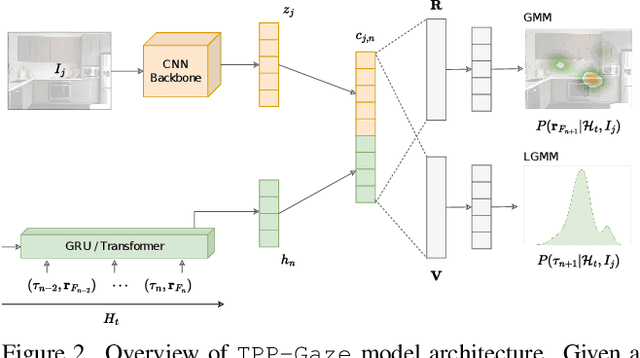Alessandro D'Amelio
TPP-Gaze: Modelling Gaze Dynamics in Space and Time with Neural Temporal Point Processes
Oct 30, 2024



Abstract:Attention guides our gaze to fixate the proper location of the scene and holds it in that location for the deserved amount of time given current processing demands, before shifting to the next one. As such, gaze deployment crucially is a temporal process. Existing computational models have made significant strides in predicting spatial aspects of observer's visual scanpaths (where to look), while often putting on the background the temporal facet of attention dynamics (when). In this paper we present TPP-Gaze, a novel and principled approach to model scanpath dynamics based on Neural Temporal Point Process (TPP), that jointly learns the temporal dynamics of fixations position and duration, integrating deep learning methodologies with point process theory. We conduct extensive experiments across five publicly available datasets. Our results show the overall superior performance of the proposed model compared to state-of-the-art approaches. Source code and trained models are publicly available at: https://github.com/phuselab/tppgaze.
Trends, Applications, and Challenges in Human Attention Modelling
Feb 28, 2024

Abstract:Human attention modelling has proven, in recent years, to be particularly useful not only for understanding the cognitive processes underlying visual exploration, but also for providing support to artificial intelligence models that aim to solve problems in various domains, including image and video processing, vision-and-language applications, and language modelling. This survey offers a reasoned overview of recent efforts to integrate human attention mechanisms into contemporary deep learning models and discusses future research directions and challenges. For a comprehensive overview on the ongoing research refer to our dedicated repository available at https://github.com/aimagelab/awesome-human-visual-attention.
 Add to Chrome
Add to Chrome Add to Firefox
Add to Firefox Add to Edge
Add to Edge